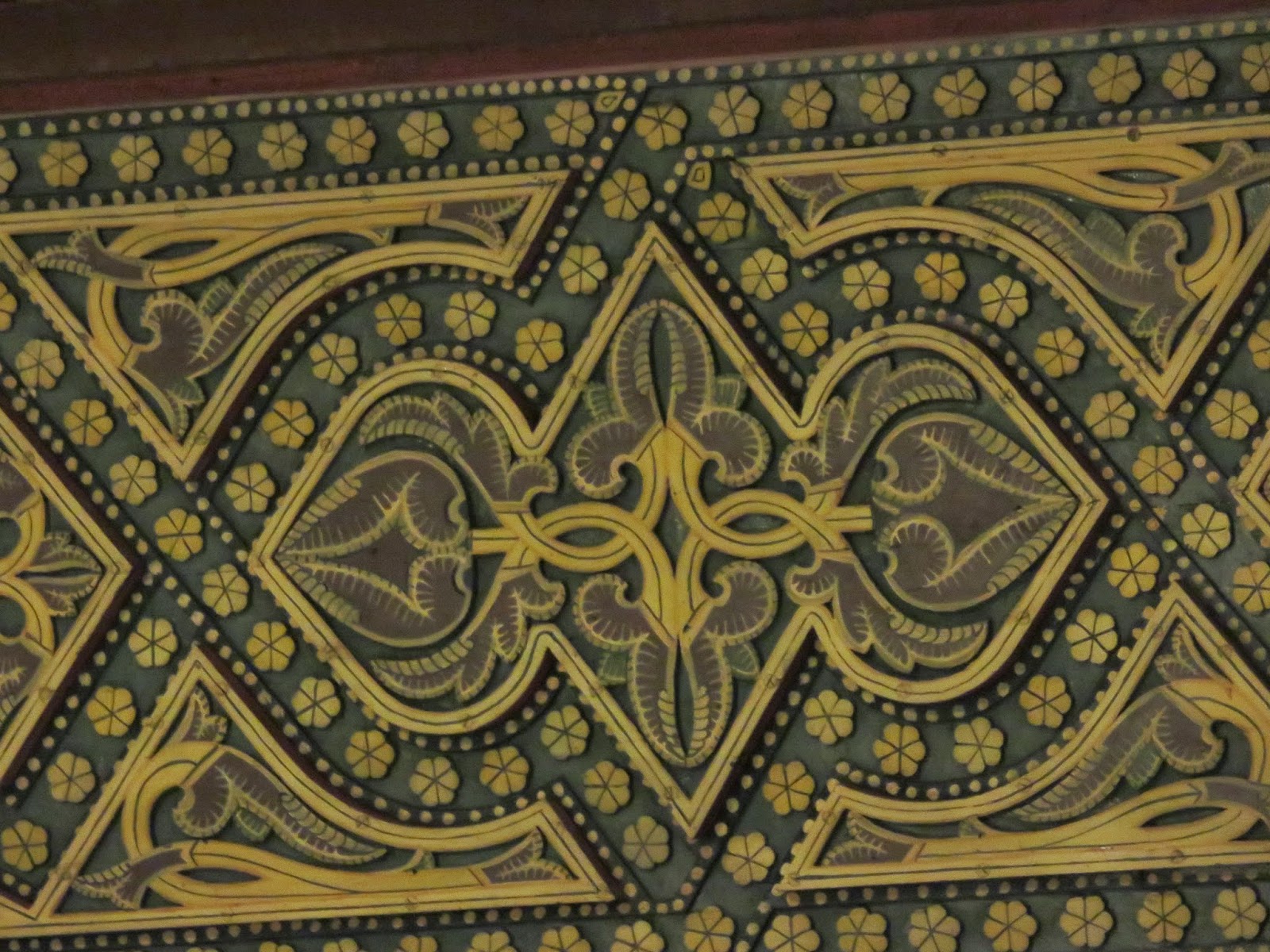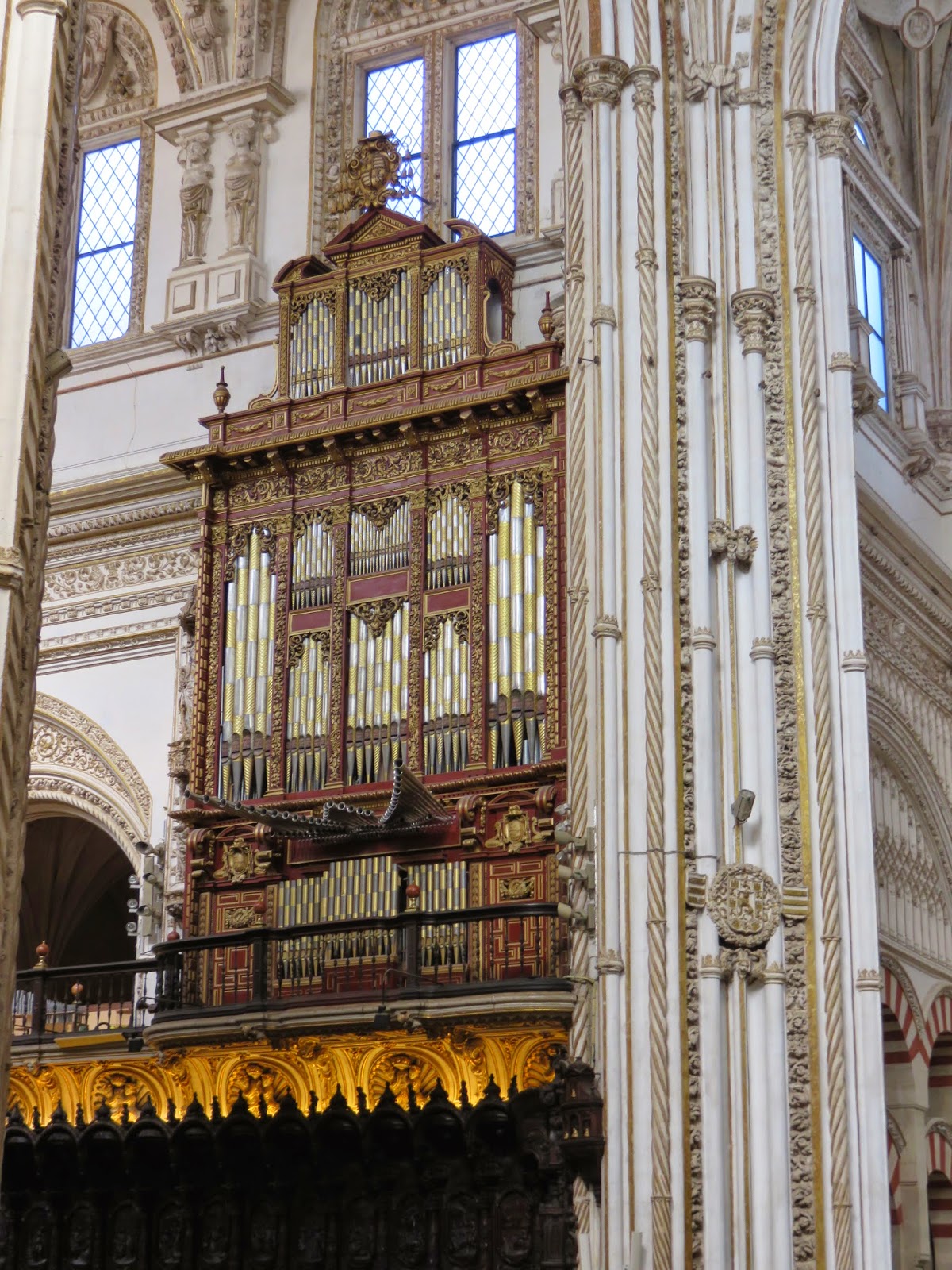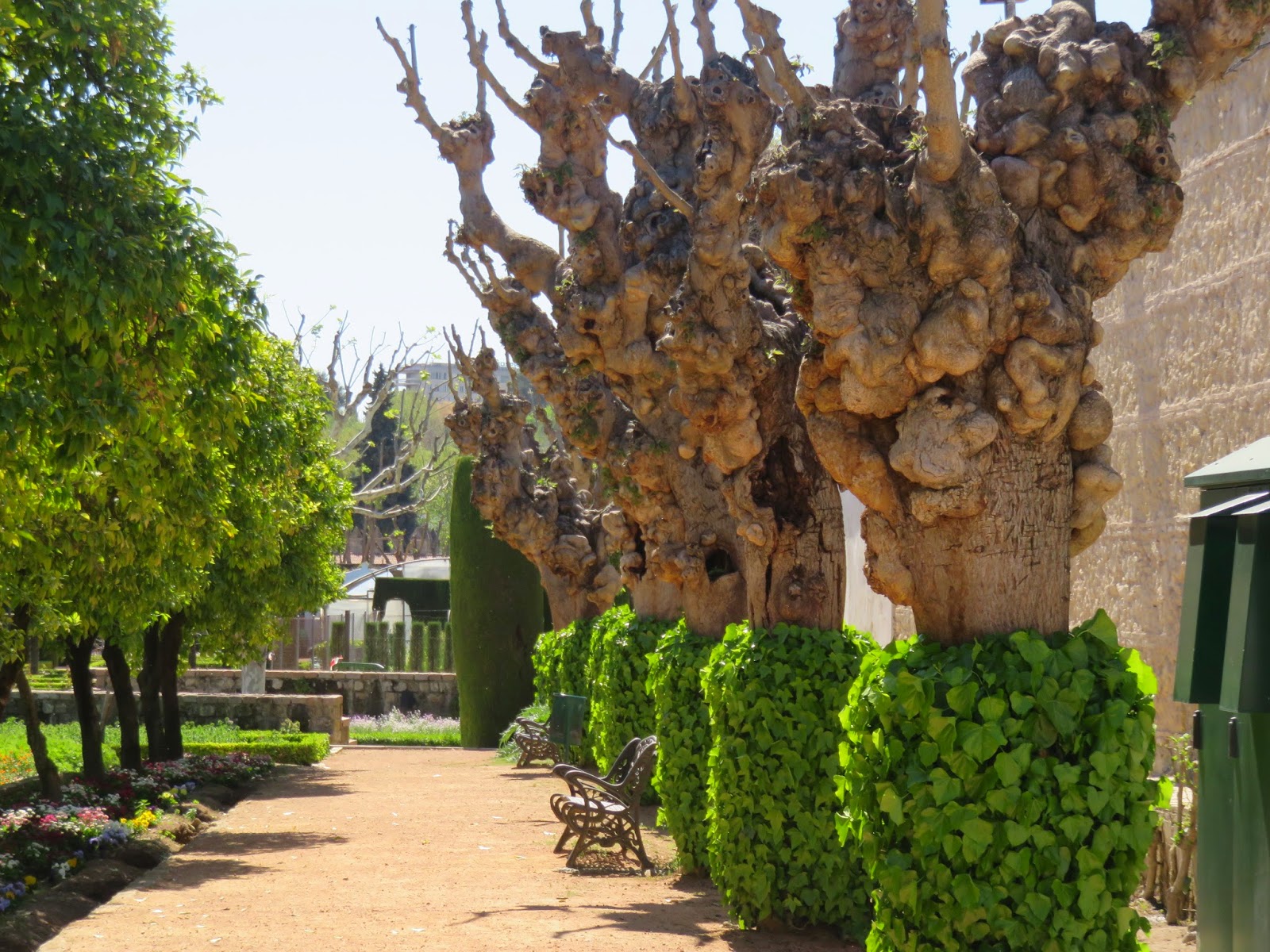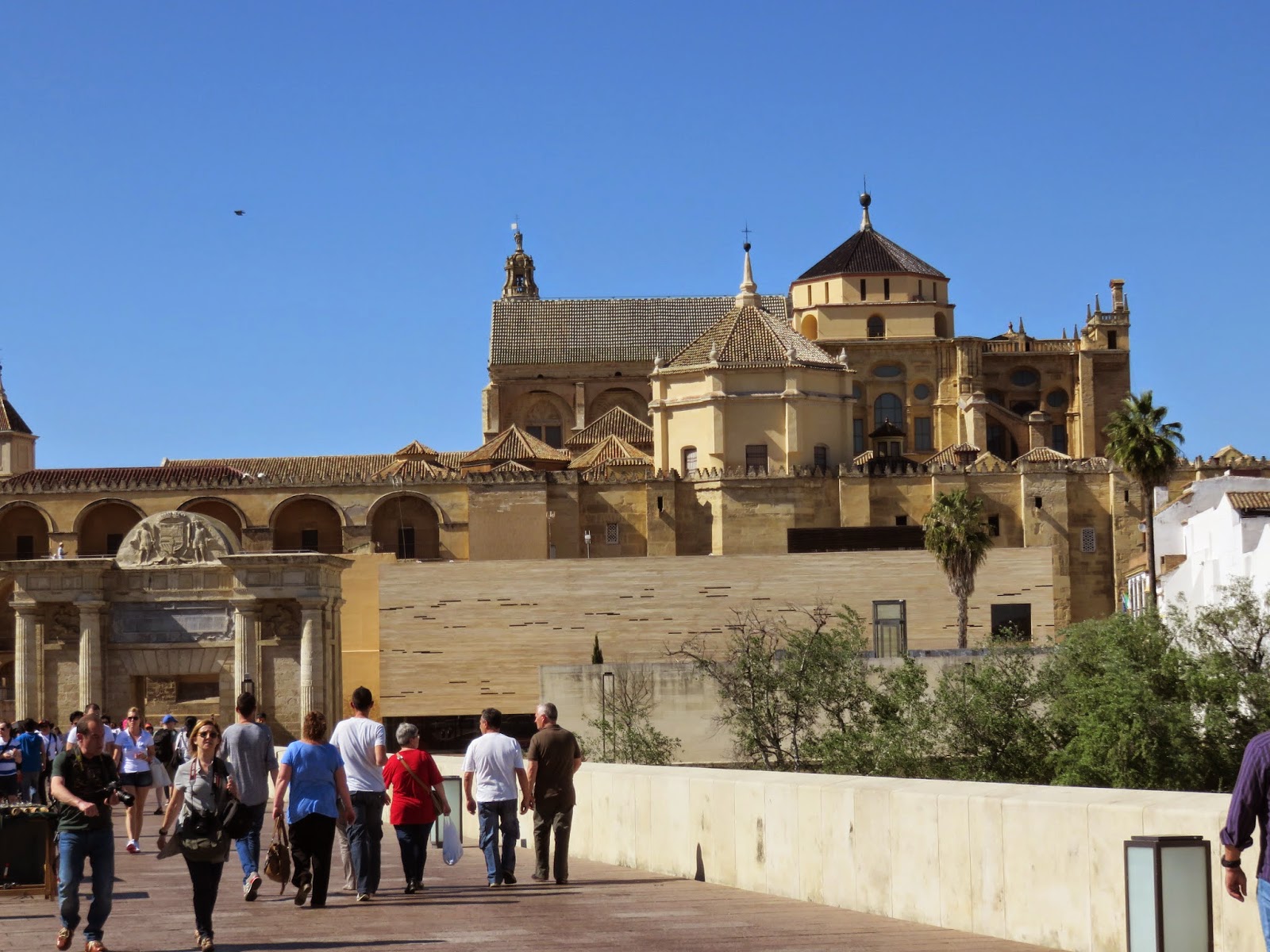We arrive in Sevilla!
("Seville" in English -- but I'll stick with the Spanish name on the blog)
Sevilla is the capital of the Andalusia area of Spain and is located along the Guadalquivir River about 50 miles from the Atlantic Ocean, making it a good river port city (only one in Spain). First, a little history. Sevilla was founded by the Romans (called Hispalis), then ruled by the Muslims who came into Spain in 712AD, then seized in 1248 by Ferdinand III, King of Castile, putting it under Christian rule going forward. After Columbus' expeditions and the resulting conquering of the new world, Seville became the central port where all goods and riches entered Europe and where the trading happened. Sailing ships only left Sevilla for the new world. Several things ended Sevilla's economic height: Cádiz (on the coast at the mouth of the Guadalquivir) became another port city authorized to trade goods from the new world (early 1500s), the Great Plague of Sevilla decreased the population by half (mid 1600s); the Guadalquivir River gradually silted up, and upriver shipping ceased.
Sevilla is the hottest major metropolitan area in Europe. In the summer, it gets VERY hot here...up to 120º. They say this is why they take siestas in the afternoon...it is too hot to be outside. This also a reason for the patios with lush greenery within the walls of the homes and buildings...a cool haven from the scorching heat. Nicholas took this photo of the scorched ground...evidence of hot, dry weather, which had not even started yet when we were there. (It had reached about 80º for a few hours in the late afternoon.)
The headless trio playing for tips
We saw yet another massive cathedral...
We met Carmen (our Spanish teacher) and her boyfriend, Dani, for lunch. They were visiting Carmen's family about an hour away and came to Sevilla to hang out with us a while.
It was great to meet up with them!
We went on a tour with our guide Bea, a friend of Carmen's sister. We walked through this courtyard, filled with the aroma of the orange blossoms on these trees...so heavenly!
Bea, on the left in purple, from Feel the City Tours in Sevilla. She was great!
Here is a courtyard where people can keep somewhat cool in Sevilla's summer heat. Often they keep their courtyards open for viewing, as they are proud to show their garden designs. There are even "patio contests" in some cities.
Here is a phenomena of ironwork...how did the metal worker create the bars that go through each other vertically and horizontally?
My dad thought of a way it could have been done...
This is called the "kissing street" because you can kiss one another from the balconies on each side. (Or even from wall to wall!)
Another beautiful courtyard.
These are very old Roman columns (photo above and below)
These are Las Setas (The Mushrooms) of Sevilla. This structure was built by a German architect to provide a viewing area for the city. It was SO crowded with a procession passing through that we did not even attempt to go up. The structure is built entirely out of wood and has to be continually adjusted and reinforced, costing the city loads of money annually that they had not planned on.
While staying in Sevilla, we took a day trip by train to Cordoba.
Hi is an old Roman bridge. The base is the Roman part, and then the newer part built on top.
Triunfo Arch (many cites have one of some kind)
The outside (one small portion) of the Cordoba cathedral-mosque we were about to enter.
The cathedral bell tower of the cathedral-mosque
There is a reason for the name Cordoba "cathedral-mosque". The Visigoths first built a Christian cathedral here, and then it was divided into half mosque and half cathedral after the Muslims entered Spain in 711AD. Later the Muslims purchased the Christian half and turned it into the magnificent mosque, most of which you see today. After the Reconquista when the Christians forced out the Muslims from Spain, they converted it back to a church, conserving most of the interior but putting a Gothic-style cathedral in the center. I like how Rick Steves' compares the cathedral part to the mosque part in his travel guide book:
Enjoy these photos of the mosque (mezquita)!
Bright light shone through the stain glass, casting colorful light patches on the ground.
Nicholas acting like...a saint???
OK, now the cathedral part...
After viewing the both the Islamic and Catholic styles, you can't help but notice the differences.
I like how Rick Steves puts it in his Spain travel guide: "horizontal versus vertical, intimate versus powerful, fear-inspiring versus loving, dark versus bright, simple versus elaborate, feeling close to God versus feeling small before God."

Another couple views of the cathedral bell tower
Calle de las Flores (Street of Flowers)
We had lunch at a recommended restaurant called Casa Mazal. The type of food they serve is called sefardí, a mix of Jewish-Spanish food, as well as a mix of Arabic-Andalusian food. I am not sure how to describe the flavors, but it was delicious, some very unique dishes, and plenty of vegetarian for Mom and me!
Our next sight in Cordoba was the Alcázar, which is Arabic for "palace". This was one of the primary residences of Isabel and Ferdinand, and it had beautiful gardens.
We walked to the top of the tower at the Alcázar to take in the views
A view from the other side of the Triunfo Arch
Before our train ride back, we took a stroll across the Roman Bridge
From the bridge, a couple photos looking back toward the arch and cathedral-mosque
A few final photos of the beautiful buildings of Cordoba
On to our final day in Sevilla...
We took yet another tour, which we thought was the best one yet.
Triana is a neighborhood on the other side of the river, where the residents have a strong identity to their neighborhood, which was known for its pottery and tiles. The Triana Bridge (below) was built by two French engineers who took architectural ideas taken from the Carroussel Bridge in Paris.
Triana is a neighborhood on the other side of the river, where the residents have a strong identity to their neighborhood, which was known for its pottery and tiles. The Triana Bridge (below) was built by two French engineers who took architectural ideas taken from the Carroussel Bridge in Paris.
Along the river
Triana
This is a famous bullring in Sevilla. The guide told us that if a matador (bullfighter) fights in this ring and is carried out through the front doors with a grand victory, he has become "famous" in the bullfighting sport. This happens infrequently, possibly every couple years.
This tower has a somewhat morbid but true story attached with it: The king (can't remember which one) wanted a particular happily married and beautiful woman (sorry, can't remember her name now), who did not want him. The king had her husband killed in battle, but the woman still refused the king. He imprisoned her in this tower, but she swayed a guard to get out and became a nun. The king came after her again, and in a chase through the nunnery, as she was running through the kitchen, she deliberately poured hot oil all over herself in order to scar herself to be unattractive to the king. With all the ugly burns, she was quite unsightly and the king no longer wanted her. She has been an example of sacrifice, and her body has been kept mummified. One day per year it is possible to see it. The guide said he saw it once, but will never again because she is such an awful sight. What a story!
The next two photos are of Plaza de España, which is very grandiose! It was built in the Renaissance Revival style in Spanish architecture, for the Ibero-American Exposition of 1929. It now houses government buildings, mainly, and has continually been used as a filming location since the 50's. (Lawrence of Arabia, Star Wars episodes I and II, and The Dictator had filming done here.)
This was a seriously beautiful spot. However, we could not spend much time here, as we had a plane to catch for Morocco...





















































































No comments:
Post a Comment